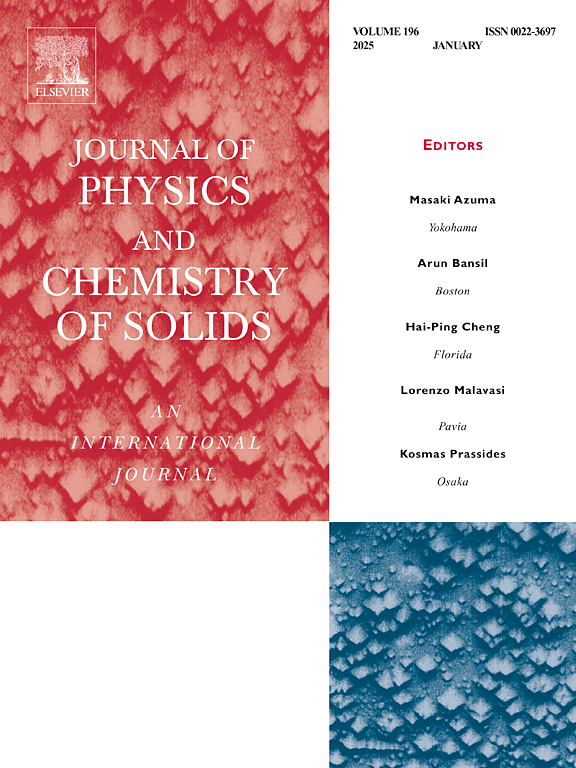Experimental and DFT study of structural, optical and piezoelectric properties of perovskite SmTaO3 for optoelectronic applications
IF 4.3
3区 材料科学
Q2 CHEMISTRY, MULTIDISCIPLINARY
引用次数: 0
Abstract
Perovskite materials have garnered significant attention due to their versatile structural, electronic, and functional properties, making them ideal candidates for a wide range of technological applications. In this study, we investigate the structural, mechanical, electronic, optical, and piezoelectric properties of SmTaO3 perovskite using a combination of experimental techniques and first-principles calculations. X-ray diffraction analysis confirmed the orthorhombic perovskite structure with a Pbnm space group, supported by high crystallinity and minimal defect levels as indicated by dislocation density and strain analysis. Scanning electron microscopy revealed irregular grain morphology, while energy-dispersive X-ray spectroscopy validated the elemental purity of the sample. Besides, the formation energy is calculated to theoretically confirm the stability of SmTaO3. The material's electronic structure demonstrated metallic behavior with overlapping valence and conduction bands at the Fermi level. Mechanical property analysis highlighted structural stability and moderate anisotropy, with optical studies revealing high UV reflectivity and absorption. Notably, the piezoelectric stress coefficients showed significant anisotropy, suggesting SmTaO3's potential for applications in sensors and energy harvesting devices. These findings establish SmTaO3 as a promising material for optoelectronic devices.

光电用钙钛矿SmTaO3结构、光学和压电性能的实验和DFT研究
钙钛矿材料由于其多用途的结构、电子和功能特性而获得了极大的关注,使其成为广泛技术应用的理想候选者。在本研究中,我们采用实验技术和第一性原理计算相结合的方法研究了SmTaO3钙钛矿的结构、机械、电子、光学和压电性质。x射线衍射分析证实了钙钛矿结构具有Pbnm的空间基团,具有高结晶度和最小缺陷水平的支持,如位错密度和应变分析所示。扫描电子显微镜显示不规则的颗粒形态,而能量色散x射线光谱验证了样品的元素纯度。计算了SmTaO3的地层能量,从理论上证实了SmTaO3的稳定性。该材料的电子结构在费米能级上表现出重叠的价带和导带的金属行为。力学性能分析强调结构稳定性和适度的各向异性,光学研究显示高紫外线反射率和吸收率。值得注意的是,压电应力系数显示出显著的各向异性,这表明SmTaO3在传感器和能量收集装置中的应用潜力。这些发现表明SmTaO3是一种很有前途的光电器件材料。
本文章由计算机程序翻译,如有差异,请以英文原文为准。
求助全文
约1分钟内获得全文
求助全文
来源期刊
CiteScore
7.80
自引率
2.50%
发文量
605
审稿时长
40 days
期刊介绍:
The Journal of Physics and Chemistry of Solids is a well-established international medium for publication of archival research in condensed matter and materials sciences. Areas of interest broadly include experimental and theoretical research on electronic, magnetic, spectroscopic and structural properties as well as the statistical mechanics and thermodynamics of materials. The focus is on gaining physical and chemical insight into the properties and potential applications of condensed matter systems.
Within the broad scope of the journal, beyond regular contributions, the editors have identified submissions in the following areas of physics and chemistry of solids to be of special current interest to the journal:
Low-dimensional systems
Exotic states of quantum electron matter including topological phases
Energy conversion and storage
Interfaces, nanoparticles and catalysts.

 求助内容:
求助内容: 应助结果提醒方式:
应助结果提醒方式:


